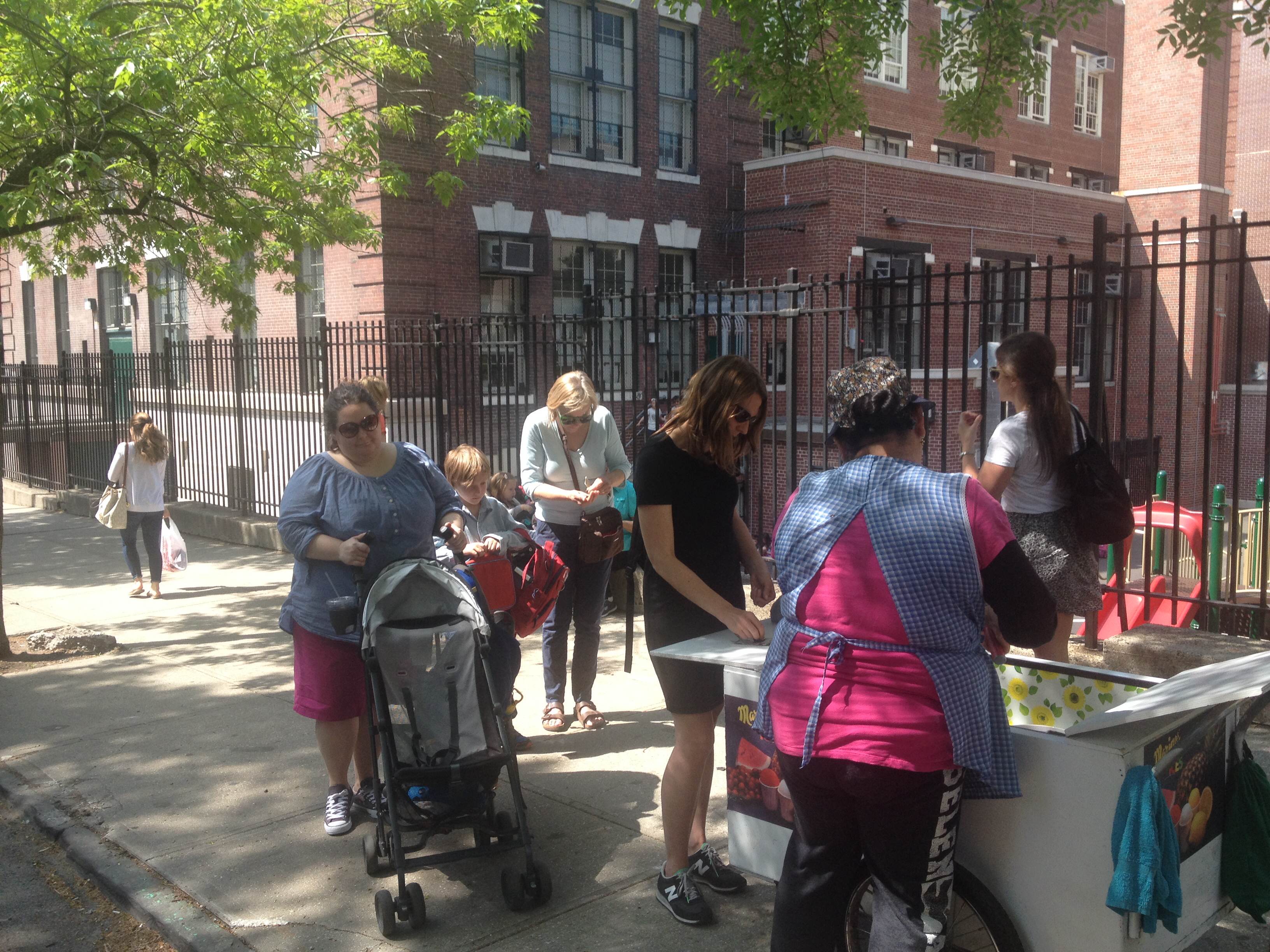Editor’s Note: This is part of a series by School-Stories.org staff that explores New York City — home to the most segregated school district in America. For more, click here.
The founders of the Eagle Academy for Young Men in the Bronx decided to open the school in 2004 in one of the city’s poorest school districts for a reason. The mission of the pioneering sixth through 12th grade school was to provide the best education possible for New York’s most disadvantaged boys.
More than a decade later, the school does not reflect the demographics of the surrounding South Bronx neighborhood. Tremont is primarily Hispanic, and nearly completely low-income. About a quarter of its students need extra help with English. Eagle Academy, on the other hand, is disproportionately black and English speaking. Even more surprisingly, the school has fewer kids living in poverty than any other school in District 9.
The neighborhood that surrounds the school is 33 percent African American and 60 percent Hispanic. Only 36 percent of students at Eagle Academy identify as Hispanic and 63 percent identify as black. The percent of its 645 students who are poor is significantly lower than the district’s average. While 95 percent of students at the average school in District 9 qualify for free or reduced lunch, a measure of poverty, only 81 percent of students at Eagle Academy fall into that category. This school is the only school in the district to have numbers skewed so significantly in this way.
The chairman of The Eagle Foundation, said the school does its best to serve the city’s neediest students. “We take our students as we find them,”Mark Getachew said. “Some of them are the most challenging students in the educational system.”
The Bronx school was founded by One Hundred Black Men, an organization which, according to its website, exists to “capitalize on the collective power of community to address issues of inequities and to empower African Americans to become agents of change in their communities.”
One Hundred Black Men was founded in New York City in 1963, and has a long-standing reputation in the black community. Its prestige likely accounts for the fact that more black parents are drawn to enroll their children in the school. Neither the organization nor the school administrators returned requests for comment.
The school typically only admits incoming sixth grade students, and priority is given to students who attend a Saturday information session with their parents in the fall. Parents must fill out an application to be considered for the school.
“They have to buy into the program — longer school days, school on Saturdays, no girls. Things like that,” said Getachew. “That has its own weeding out process as a result. Those who are not interested might not rank us at the top of their list that they submit to the DOE. It’s a little bit tough to say it should reflect the community on a percentage by percentage basis.”
When asked to explain why the school does not attract more Hispanic students in a predominantly Hispanic neighborhood, members of the school’s administration who have been directly contacted via email, telephone or face-to-face, did not respond.
A professor of economics and education at Teachers College at Columbia University said the time-intensive admissions process might have something to do with the skewed socioeconomic numbers. “Even though some higher income families are very busy and fully employed, they may have the ability to get time off work,” said Professor Henry Levin. “People in low wage jobs don’t have that luxury.”
He said single working mothers are at a bigger disadvantage. They are less likely to be able to take off work, or to pay for someone to take care of their children in order to participate in the school’s required information sessions and meetings with guidance counselors.
English Language Learners in The Eagle Academy’s stand at 4 percent, compared to 25 percent in District 9 at large.
The advertising method for the school might be a factor as well. Information on Eagle Academy’s website is not offered in Spanish.
Stan Johnson, a 17-year-old junior at Eagle Academy, said he knows of students at the school who come from higher-income households, adding that he believes their parents picked the schools that offered opportunities “that other schools might not.”
These extra programs are available due to private funding streams that bolster the Eagle Academy network, which has grown in recent years to include five schools in the city and one in Newark. The academy receives two types of funding: private money from the Eagle Academy Foundation, which raises over $1.5 million annually, and the city’s per-pupil funding that is available to all public education students.
In order to promote its mission, the foundation allocates over $500,000 to after-school programs, which provides students with a place to study and stay off the streets. This allows parents and guardians the opportunity to work longer shifts, said Getachew.
The fact that the school has fewer English language learners and fewer children who live in poverty has not worked to raise its test scores, however. Eagle Academy’s scores are below the district’s average in both English and math. Eleven percent of its students passed the English Regents exams with a score of 3 or 4, which is below the district average of 13 percent. Only 3 percent of the school’s students passed the math Regents compared to district average of 13 percent.


